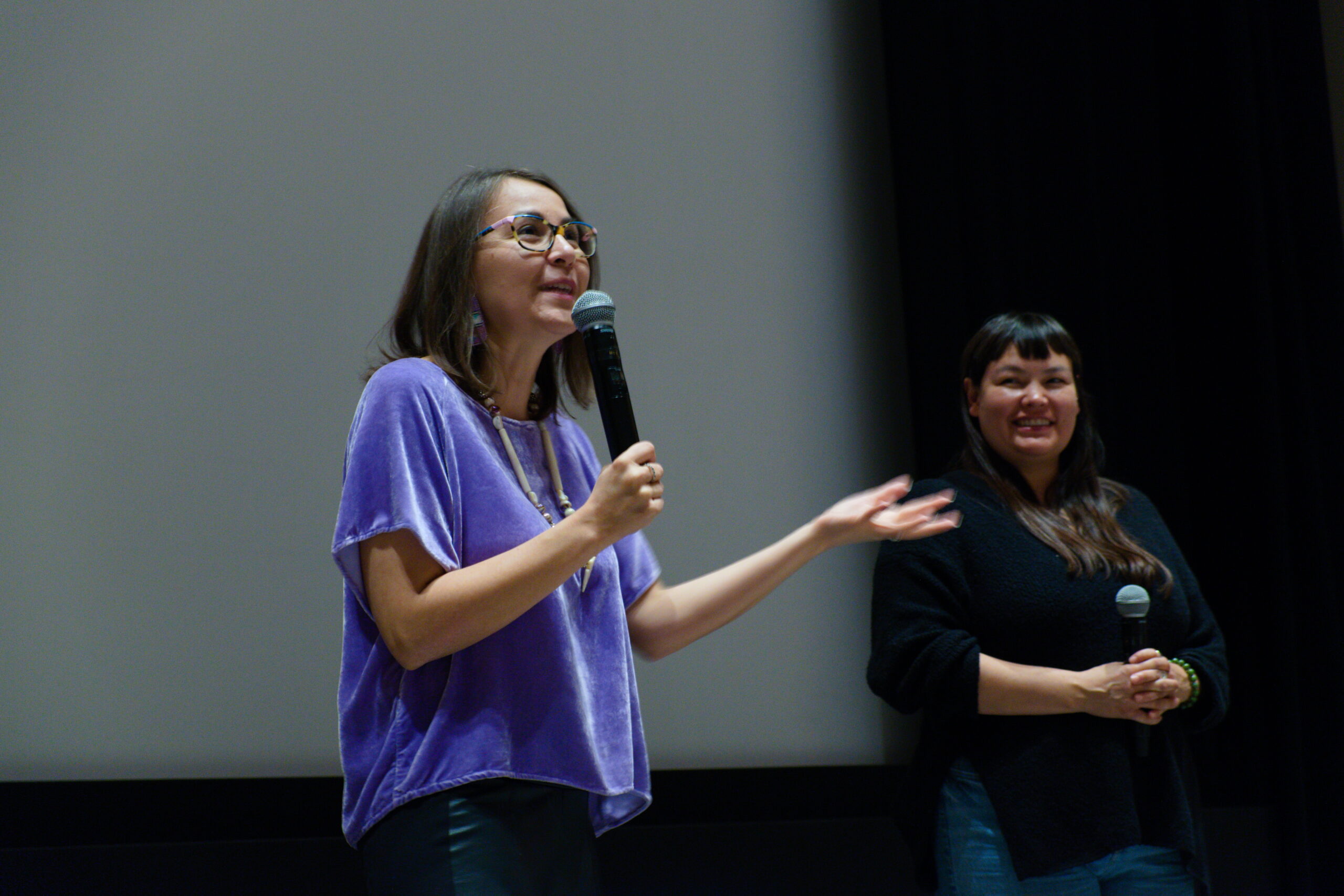The film explores the ongoing cultural genocide of Indigenous peoples specifically through adoption policies
The feature documentary Daughter of a Lost Bird, directed by Brooke Pepion Swaney, centers the story of Kendra Potter as she reconnects with her biological mother. Growing up in a white family with a white culture, she knew she was adopted, but it was only later in life that she learned she had native blood.
Daughter of a Lost Bird is Swaney’s first feature documentary. She is from the Blackfeet nation, which was cut off from the border forming process. Swaney is most known for helping produce the first season of the All My Relations podcast, along with Matika Wilbur and Adrienne Keene.
The term “Lost Bird” refers to native children that were adopted out of their nations, mostly by force, and never returned.
This film explores Potter’s search for her mother, understanding the forced adoption of her mother, and coming to terms that she is a direct product of forced assimilation in the ongoing cultural genocide against Indigenous peoples across Canada and the US.
“When someone says you are Lummi, I can’t wrap my mind around that, I don’t know what that means,” states April, Kendra’s mother in the film. She was raised far from her nation, so though she finds identity in being Lummi she cannot quite comprehend it.
The film took seven years to make, between concretely finding Potter’s mother April, breaks for mental health, and the actual shooting of the film.
Though the film is set in what is known as the US, adoption policies and methods of Indigenous erasure were very similar to those that transpire in Canada.
The Q&A was composed of the Swaney and Na’kuset. Na’kuset has been the executive director of the Native Women’s Shelter of Montreal since 1999, and is from Saskatchewan, Treaty 6.
“Because it’s an American film, the assimilation policy that they had was named differently than it is in Canada, but the harm is the same,” Na’kuset noted.
The assimilation of Indigenous peoples in Canada was known under the name of the Adopt Indian and Métis Project (AIM) project. On record, there were 20,000 children displaced, but as noted by Na’kuset, “the numbers are larger than that.”
Swaney and Potter met when Potter was cast as an actress in one of Swaney’s films. It was through learning more about her adoption story and the policies of forced assimilation that Swaney wanted to produce a documentary film about Potter’s life.
It is noticeable that Potter is a capable actress in certain scenes, as she is very comfortable as she stares directly at the camera. This has the effect that the audience almost feels like she is seeing past the camera, past the spectators, as if daring the audience to judge her.
It’s in moments of reunification with her mom that the audience feels they are seeing a real version of Potter. She is not as aware of the camera in scenes reuniting with family members she’s meeting for the first time.
When moving back to Montana after finishing her studies in New York, the filmmaker was able to reconnect with her family.
“My mom and I grew up off-reservation, it was nice to come home, but also complicated; I have family members who are struggling with addiction, and I have nieces and nephews who are out there in foster care.”
Moving back to Montana let Swaney gain the knowledge that, “all of these topics are close to every Indigenous person, it’s not one’s own personal experience.” It’s a series of colonial policies that have constantly tried to erase and assimilate Indigenous folks.
This film served to raise awareness about adoption programs in the US, and their direct impact on people’s identities and cultural losses.
“Where I feel like there’s a huge difference is between our societies, is the native voices are so much more present and louder in Canada than in the States.”
Swaney’s commentary throughout the film provides context to the story. She comments on her discomfort at times of almost projecting what she wants Potter to feel with her mother. She ends the film by stating that Daughter of a Lost Bird is ultimately Potter’s story.
In her closing notes, Na’kuset discusses one of the projects Native Montreal is working on. It’s a new project for housing women that seeks to offer supportive housing. In relating it to the film, she says:
“This is how we get our children back.” By supporting native women who need housing, there is the possibility to return forcibly adopted children to their families and cultures.
